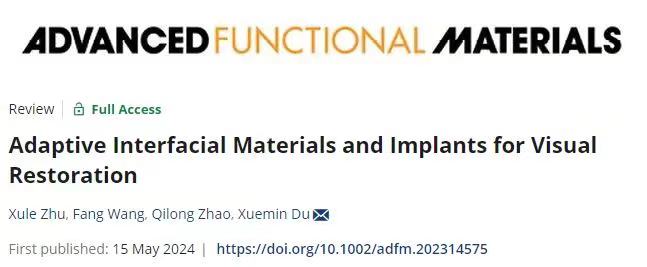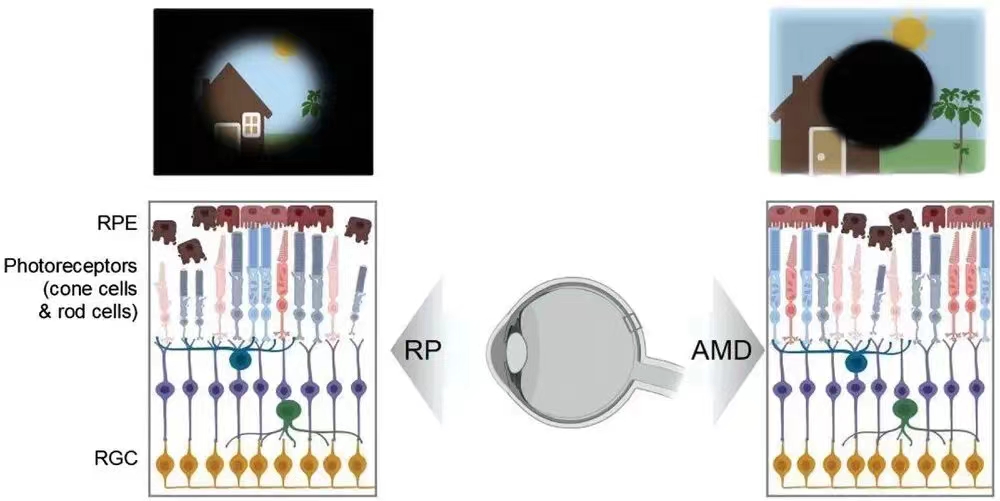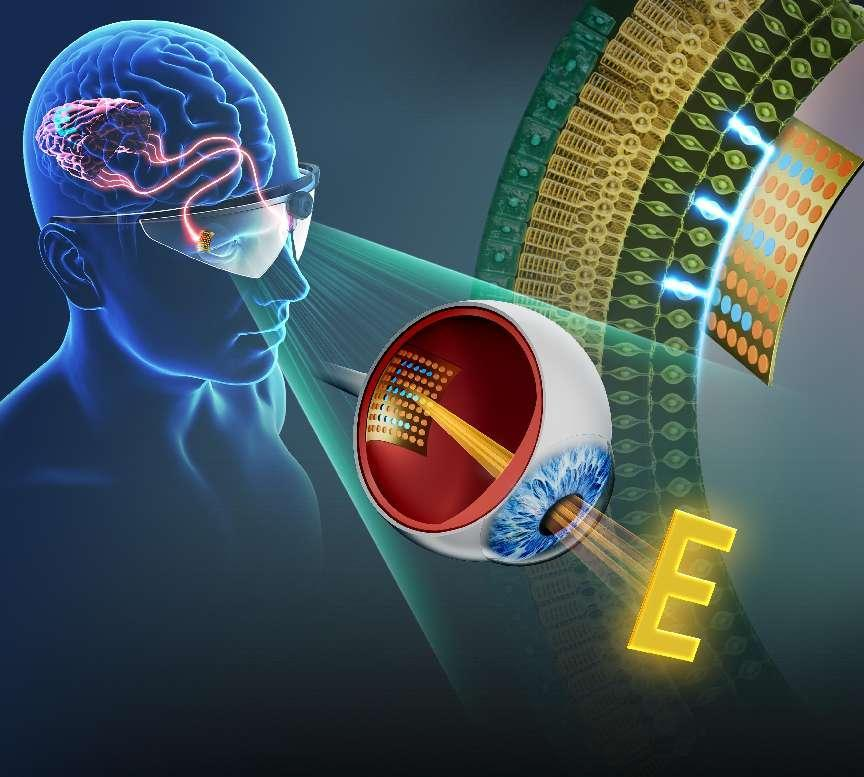
电话:0755-86387974
邮箱:s.kang5@siat.ac.cn
地址:深圳市南山区西丽深圳大学城学苑大道1068号


Blindness is a major challenge for global public health, affecting over 43 million people worldwide. Studies have found that retinal degenerative diseases such as retinitis pigmentosa (RP) and age-related macular degeneration (AMD) are the leading causes of blindness. In patients with such diseases, the photoreceptor cells in the retina lose the ability to convert external light into electrical signals that retinal nerve cells can recognize, thereby causing visual field defects and even irreversible blindness.
Recently, the team led by Researcher Du Xuemin from the Research Center for Intelligent Medical Materials and Devices at the Shenzhen Institute of Advanced Technology, Chinese Academy of Sciences, published a review article titled "Adaptive interfacial materials and implants for visual restoration" online in the international academic journal Advanced Functional Materials. This article systematically summarizes the cutting-edge progress and existing challenges of adaptive interfacial materials and implant devices for visual restoration, which is expected to further promote the development of new technologies for visual restoration.

Screenshot of the on-line article
Despite significant advancements in ophthalmology, currently, clinical practice still cannot restore patients' vision through drug therapy or surgical operations. However, fortunately, in the retinas of patients with RP and AMD, not only is the survival rate of nerve cells on the retina high, but the original visual pathway from the retina to the visual cortex of the brain is intact. This means that if a certain method is adopted to reactivate the retinal nerve cells, thereby generating nerve impulses and transmitting them to the visual cortex, certain vision can be restored.

Pathological schematic diagrams of patients with AMD and RP
For centuries, human efforts to restore vision have never ceased. In recent years, with the rapid development of new materials, engineering technology, microelectronics, biomedicine, life sciences, etc., it has brought brand-new hopes for visual restoration research.

The development history of adaptive interface materials and implant devices for visual restoration
Based on this, the research team led by Researcher Du Xuemin first systematically summarized and discussed the functional principles, design principles, and biological effects of intelligent interface materials used for visual restoration. Further, they reviewed the functional principles, clinical trial effects, and the latest commercialization progress of successful visual prostheses in clinical practice in recent years, and focused on discussing the importance of the adaptation of interface materials and implanted prostheses to the interfaces of neural tissues and cells. They also looked forward to the key problems existing in the safety, stability, and energy conversion efficiency of existing visual restoration interface materials, the challenges in interface adaptation, signal transduction, and information processing of visual prostheses, as well as the possible future development opportunities of visual restoration interface materials and visual prostheses.

The principle of adaptive interface materials and implant devices for visual restoration
Researcher Du Xuemin from the Research Center for Intelligent Medical Materials and Devices at the Shenzhen Institute of Advanced Technology, Chinese Academy of Sciences, is the corresponding author of this article. Master's student Zhu Xule is the author of the paper. Co-authors Associate Researcher Zhao Qilong and Associate Researcher Wang Fang made significant contributions during the revision of the paper. This article received support from scientific and technological projects such as the National Key Research and Development Program, the National Natural Science Foundation of China, the Youth Innovation Promotion Association of the Chinese Academy of Sciences, the Key Project of the Guangdong Provincial Regional Joint Fund, and the Outstanding Young Scholar Project of Shenzhen.

Du Xuemin, an outstanding recipient of the National Natural Science Foundation of China for the Youth Fund, is the director and researcher of the Research Center for Intelligent Medical Materials and Devices at the Shenzhen Institute of Advanced Technology, Chinese Academy of Sciences. He was selected as an outstanding member of the Youth Innovation Promotion Association of the Chinese Academy of Sciences, a top-notch young talent in technological innovation under the "Special Support Program" of Guangdong Province, and an outstanding young scholar of Shenzhen. He was elected as a standing committee member of the International Society of Bionic Engineering, a member of the Youth Working Committee of the Chinese Society of Micro-Nano Technology, and a member of the Smart Composite Materials Professional Committee of the Chinese Society for Composite Materials. He serves as the associate editor of Research and Advanced Bionics journals and a young editorial board member of The Innovation, National Science Open, and other journals.
In recent years, as the person in charge, he has presided over multiple projects including the outstanding Youth Fund of the National Natural Science Foundation of China, the topic of "Key Scientific Issues of Transformative Technologies" of the National Key Research and Development Program, international cooperation projects of the Foundation Committee, key projects of Guangdong Province, and outstanding young scholar projects of Shenzhen. The related achievements have been published in journals such as Science Advances, Matter, Advanced Materials, ACS Nano, Advanced Functional Materials, and National Science Review as the corresponding author (including co-authorship), and he has obtained over 30 authorized patents.
Research fields: Intelligent polymer materials, biological interfaces, wearable/implantable biological devices (such as tissue engineering scaffolds, bioelectronics, flexible sensors and actuators, etc.)